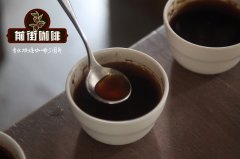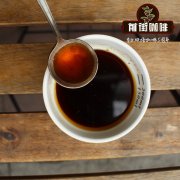Central American coffee beans have unique environmental advantages. This paper introduces the differences and characteristics of coffee in several regions.
They are all distributed in the alpine slopes or plateau areas covered with volcanic ash at an altitude of 1200 meters. The coffee harvest and harvest season is from October to February of the following year. The coffee beans it produces belong to Arabica species, with Pacas and Bourbon brands as the main brands, belonging to big beans, with sweet taste and excellent flavor. El Salvador is also an important producer of organic coffee.
Guatemala-
The latitude of Guatemala is about 15 degrees. Because of the long mountains and great regional climate changes, Guatemala's seven major coffee producing areas are all located in the highland topography under the subtropical climate, with rich and stable rainfall and excellent environment for fertile volcanic ash soil. the coffee beans produced are all Arabica, each with different flavors and characteristics, excellent sour taste and fruity aroma. It is one of the top coffee in the world and is suitable for individual consumption.
Among them, the coffee from Antigua is famous all over the world because of its slightly sour, rich glycol, and slightly volcanic charcoal flavor. The coffee of Guatemala belongs to Arabica, which is treated by washing. In the far northwest, there is a piece of Vivette Nango (Huehuetenango) highland. Because of the hot and dry wind blowing into the mountains from the de Royal Peck Plain in Mexico, the mountains are free from frost. Because coffee is grown above 5000 feet above sea level, the beans in this area are solid and full, have a special sour taste, have a slight wine flavor, and have a hard texture. It is also one of the most distinctive coffee in Guardia.
Nicaragua-
Nicaraguan coffee is mainly produced in the central and northern parts of the country, covered with volcanic ash and shaded by trees, resulting in high-quality Nicaraguan coffee, which is mediocre, mild and slightly sour, and is suitable for comprehensive coffee. Shade planting is its characteristic, while coffee beans are washed and dried in the sun. Nicaraguan coffee beans are larger than those of other countries. In particular, Maragogipe (a huge tree species called elephant beans) from Madagelba has a clear taste and excellent aroma, which is highly valued in the market for its round and soft texture.
Honduras-
In the past, Honduras was less well-known in the consumer market because it did not have strong support in the handling and transportation of raw beans. In recent years, Hongguo has actively changed and expanded the coffee industry, which has gradually opened up the popularity of coffee in Honduras in the international community. Honduras collects 3 million bags of coffee every year, providing the world with perfect coffee, unique coffee aroma and quality, making it the second largest coffee exporter in Central America and the tenth largest coffee exporter in the world.
Honduran coffee is divided into six major producing areas, spread to the west and south, namely Santa Barbara (Santa Barbara), Periso (El Paraiso), Copan (Copan), La Paz (La Paz) and Comayagua (Olan Mound), with an average height of more than 1100 meters above sea level. Coffee varieties are 100% Arabica, mainly Typica, Bourbon, Caturra, Villa Sarchi and Lempira brands. Coffee from Honduras

Important Notice :
前街咖啡 FrontStreet Coffee has moved to new addredd:
FrontStreet Coffee Address: 315,Donghua East Road,GuangZhou
Tel:020 38364473
- Prev

Ethiopia Yega snow map processing plant? What are the characteristics of Xuelitu coffee?
Professional coffee knowledge exchange more coffee bean information please follow the coffee workshop (Wechat official account cafe_style) English name Ethiopia Yirgacheffe Chelektu national Ethiopian production area Kochere Chelelektu grade ECX highest grade G1 producer Dembel field treatment traditional sun treatment varieties native species (Heirloom) altitude
- Next

Costa Rican coffee Costa Rica Brumas processing plant introduction.
Professional coffee knowledge exchange more coffee bean information please follow the coffee workshop (Wechat official account cafe_style) Brumas processing Plant (Beneficio Brumas del Zurqui) was founded by the Rodrguez Carballo family in 1880 and is now managed by Juan Ramn Alvarado Rodrguez, Donna Clomancia Manor (Finca Dona Clemen)
Related
- Does Rose Summer choose Blue, Green or Red? Detailed explanation of Rose Summer Coffee plots and Classification in Panamanian Jade Manor
- What is the difference between the origin, producing area, processing plant, cooperative and manor of coffee beans?
- How fine does the espresso powder fit? how to grind the espresso?
- Sca coffee roasting degree color card coffee roasting degree 8 roasting color values what do you mean?
- The practice of lattes: how to make lattes at home
- Introduction to Indonesian Fine Coffee beans-- Java Coffee producing area of Indonesian Arabica Coffee
- How much will the flavor of light and medium roasted rose summer be expressed? What baking level is rose summer suitable for?
- Introduction to the characteristics of washing, sun-drying or wet-planing coffee commonly used in Mantenin, Indonesia
- Price characteristics of Arabica Coffee Bean Starbucks introduction to Manning Coffee Bean Taste producing area Variety Manor
- What is the authentic Yega flavor? What are the flavor characteristics of the really excellent Yejasuffi coffee beans?

